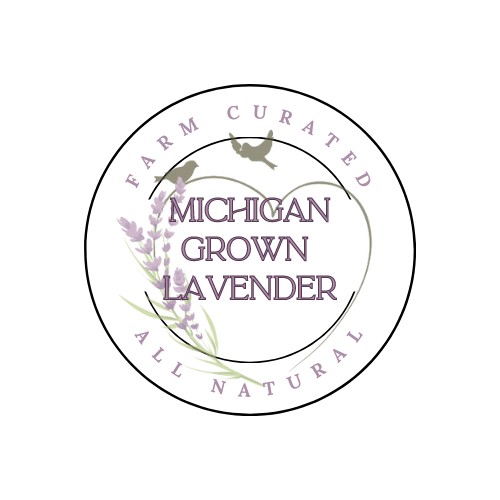No products in the cart. Add Products
Here are our frequently asked questions for our lavender farm. We do have a contact form below the FAQs just in case we did not cover it all and you have any additional questions about our farm or products!
Is Twin Flame Lavender Farm Open to the Public?
YES! Please check our event calendar to find out when we have open farm events!
What types of lavender do you grow on Twin Flame Lavender Farm?
We currently have several angustifolia cultivars planted:
- Vera
- Mustead
- Hidcote Blue
- Violet Intrigue
- Wee One
- Ellagance Snow
- Ellagance Sky
- Ellagance Purple
- Lady
- Rosea
- Folgate
Our intermedia cultivars include:
- Grosso
- Gros Bleu
- Phenomenal
How many lavender plants are growing on Twin Flame Lavender Farm?
After the 2023 planting season, we now have over 1000 lavender plants. We are are always adding new lavender plants, flowers and herbs! We are also one of the first farms in the United States testing hydroponic grown lavender starts.
Do you have culinary lavender on Twin Flame Lavender Farm?
Yes, a majority of our lavender is hydroponic seed grown "Lavandula angustifolia" which is considered the "gold standard" of lavender for both culinary and aromatherpy. Our culinary lavender is only available for the public to purchase, fresh, during bud and bloom season for you to harvest.
We have very young Lavandula x intermedia (Lavandin) plants to be sold for flower bunches only. Lavandin has high amounts of camphor. You should not eat camphorous lavender. Camphor is also a natural stimulant which doesn't provide a high therapeutic value vs linalool rich English lavender.
How many acres of lavender do you currently have on Twin Flame Lavender Farm?
At the end of the 2023 season we have about 3/4 an acre. When completed (always a work in progress,) we are planning on housing approximately 2 acres of lavender on Twin Flame Lavender Farm.
Since Michigan summers are humid, we have our lavender spaced far apart for air flow. Lavender prefers dry heat.
What type of soil do you have on Twin Flame Lavender Farm?
While we are tucked in the DNR Allegan State Forest, Lake Michigan is only 15 miles down the road. Our soil is a lavender farmer and plant's dream - all sand!
Is your lavender organic on Twin Flame Lavender Farm?
While we are not certified organic, we maintain organic, natural farming practices. No synthetic fertilizers, pesticides or herbicides are utilized on our farm. We do have to amend the soil with lime once a year in order to preserve the alkalinity (6.5-7.5) of the soil for the lavender.
Our lavender farm is MAEAP (Michigan Agricultural Environmental Assurance Program) verified for our cropping and farmstead systems.
Where does Twin Flame Lavender Farm source their plants?
We source a majority of our angustifolia strains from seed and germinate them ourselves. This is another reason why it took so long for our lavender farm to open to the public..
Growing lavender from seed is difficult and the germination rate is very low. Not all lavender farmers have the patience to do this. We are utilizing this method because we want to know that our plants were never exposed to unnatural fertilizers, herbicides or pesticides during their growing cycle.
When is your lavender in bloom on Twin Flame Lavender Farm?
Our lavender is in bloom between mid June and mid July. It depends on spring weather! Our main focus is Lavandula angustifolia and those are the early bloomers which are in bloom through 4th of July. Our very few Lavandula x intermedia plants start their bloom shortly after the angustifolia bloom. Our Lavandula angustifolia does start budding around Memorial Day. We invite you to read our blog post about when Lavender is in bloom in Michigan.
Lavender plants release their fabulous fragrance even when they are not in bloom. If you missed our bloom, you can still smell waves of the heavenly lavender fragrance as long as the plants are not in winter dormancy.
Do you allow for professional photography on Twin Flame Lavender Farm?
Yes! For insurance purposes: the professional photographer must be licensed, insured and sign a contract before they are allowed on our property.
Will Twin Flame Lavender Farm sell plants in 2022?
We do have our nursery license and lavender plants are available for purchase!
Why Doesn't Twin Flame Lavender Farm Sell Lavender Essential Oil?
A majority of our crop is Lavandula angustifolia which is well known to be stingy with it's oil. Rather than steam distilling to make essential oil, we hydrodistill distill for hydrosol. The oils are entrained in the water which in turn, is used to make our water based products. Hydrosols provide the same benefits as essential oil but it is not volatile. IE, you do not need to mix it with a carrier oil before using it. Most small farms distill Lavandula x intermedia (Lavandin) to make essential oils since they are a higher yielding oil. These oils have different properties than English Lavender. You may read about the difference between the two types of lavender here.
What products will Twin Flame Lavender Farm sell in 2024?
We always spend the winters formulating new products with our lavender infused oils and hydrosols. We are always looking for suggestions for new products. If you have a creative suggestion, we invite you to fill out our contact form to let us know what new products you would like to see on the farm next year!
In 2024, we will have our "regular lineup" plus lavender plants.













